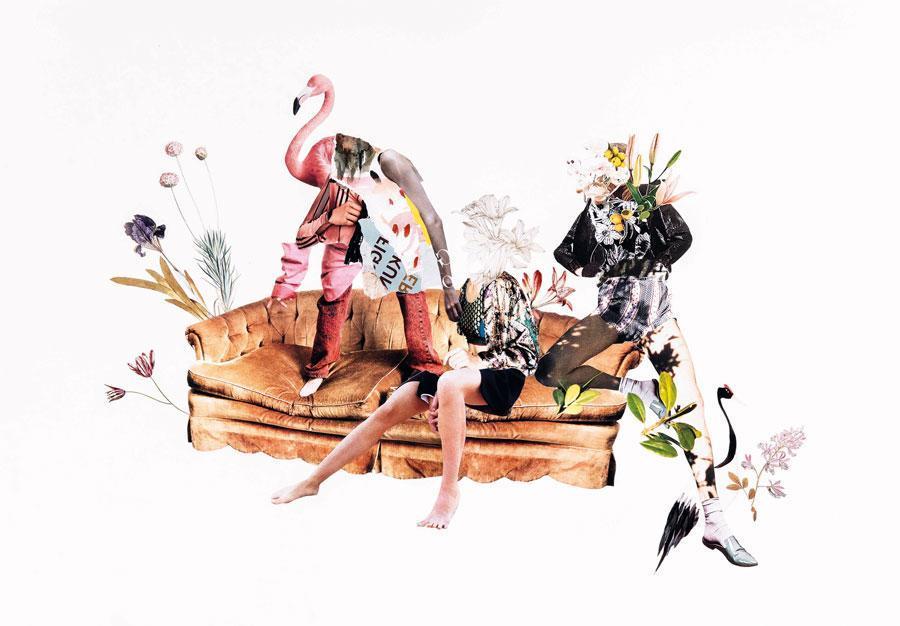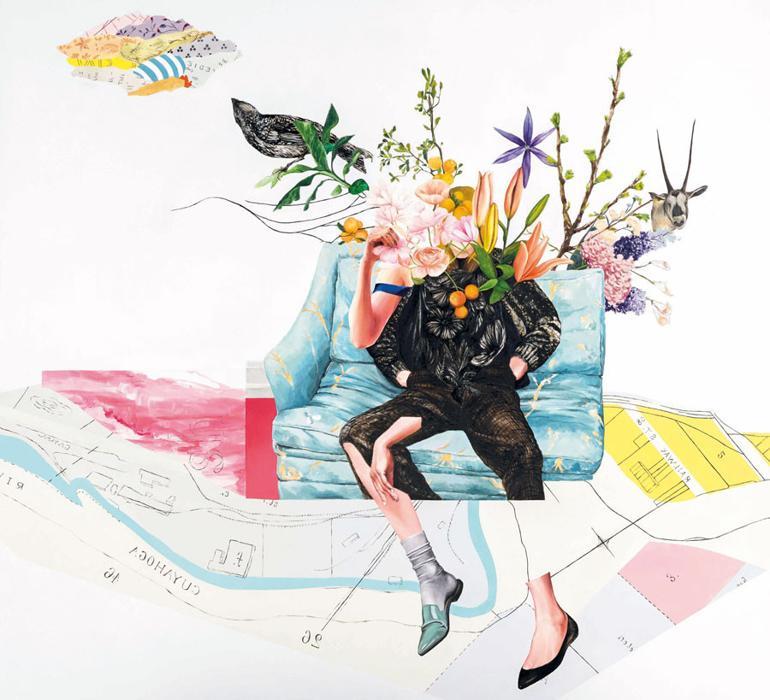
The Turkish artist Ekin Su Koç’s works depict her personal experiences regarding cultural and social issues, such as migration, cities, society, families, and belonging. Her solo exhibition at Istanbul’s Anna Laudel Gallery tells a universal story driven from the artist’s personal experiences.
Her deep perception of how she looks at culture and society reflects onto her collages and paintings. On the other hand, her ability to understand the life we are living and society we belong to opens a new dimension to look for a new meaning of life. Her understanding of life is not a coincidence.

Koç has moved to different cities in different parts of the world while questioning the reality of being an immigrant, belonging to a society and defining herself as a woman within that society. Each work of Koç tells us a new story about her experiences in life. But, even though we see a personal approach, Koç also speaks about the real problems that we all face in every kind of society.
“I am currently living in Berlin. Before, I was in Denmark. I have experienced different cultures within a brief period of time. There is always the possibility of not feeling any belonging to the society I am living in. However, in a way this is very liberating,” she says. Koç’s work is a blend of colors, experiences, fabrics and different materials.
She uses fish bones, Ottoman fabrics, maps, black and white photos collected from the houses of old immigrants, laces, images, and strands of different hair models and colors.
Her figures are sexless or multi-sex figures. She likes to gather all these details, and as a result, she creates a woman with a formless head, a collaged face or a body. Koç often tries to tell us how it is unimportant to be someone in a society.
According to her, we are all individuals who are trying to express ourselves in the best way we can. “My figures do not have any faces [faces are made from collages]; sometimes we see only a spinal cord or only the legs of a human being.”
Koç is trying to create a new identity, trying to tell us it is always possible to be someone else rather than ourselves.
Materials and visuals
In a way, the artist is creating a new visual language using different materials. Using these materials, she creates themes. For example, in one of the dark rooms of the gallery, Koç has created an installation on a wall full of opium followers and collages. Within this room, there lies a story, says Koç.
The opium followers are from her hometown. In a way, she tells how she misses her childhood. The room also coincides with the works out of which Koç tries to create a home. Home is a concept that I am working on, she says, and home means a lot to her. House also stands as a message of belonging. She asks if it is possible to belong to a society if we own a home there. The answer lies within the experiences in that society, according to Koç.
In some of her works, we witness how her subconscious flows and how she thought to bring one to another. She praises being a woman, she praises being an immigrant, and she questions the notions of family, motherhood, and fatherhood.
In a way, all her collages and works are proofs to how she communicates with the society, according to the artist.
The themes of belonging and creating new identities and bodies are just a medium for her to explain herself deeply.
The exhibition can be visited through Jan. 6, 2018.